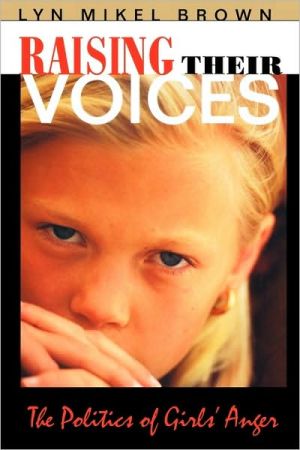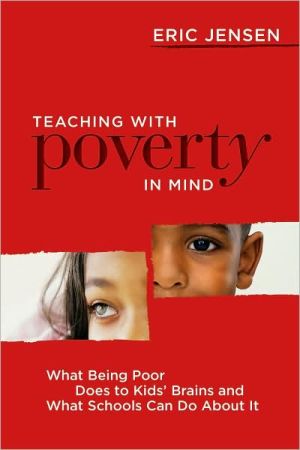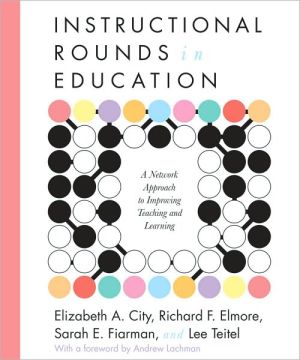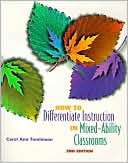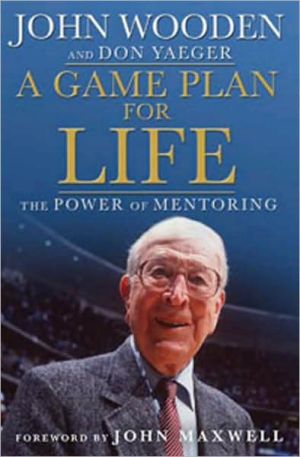Raising Their Voices
Two fourteen-year-old girls, fed up with the "Hooters" shirts worn by their male classmates, design their own rooster logo: "Cocks: Nothing to crow about." Seventeen-year-old April Schuldt, unmarried, pregnant, and cheated out of her election as homecoming queen by squeamish school administrators, disrupts a pep rally with a protest that engages the whole school.\ Where are spirited girls like these in the popular accounts of teenage girlhood, that supposed wasteland of depression, low...
Search in google:
How do teenage girls react in today's society when they are insulted, dismissed, or mistreated? In her provocative new book, Raising Their Voices: The Politics of Girls' Anger, author Lyn Mikel Brown explores the differences in individual girls' experiences and attitudes. Publishers Weekly Adolescent girls resist encouragement to be passive, quiet and "good," finds Brown, an associate professor of education and human development at Colby College and coauthor of Meeting at the Crossroads: Women's Psychology and Girls' Development. The girls in her study readily identify the sources of their anger when it is aroused, but sometimes have difficulty expressing it directly, often navigating daily between what is expected of them and what they expect of themselves. They relentlessly try to make sense of the world and their place in it, refusing any attempt to pacify or silence them when conflicted. Although Brown acknowledges that her research is limited by her choice of subjects--only white, lower- and middle-class girls, aged 11 to 14, in two Maine towns--her admission isn't enough to cover the lack of comparison regionally and racially. Once one has made allowance for this small sample, however, Brown's observations about class differences and emotional expression should prove intriguing for those trying to explore the valleys and peaks of an adolescent mind. Unfortunately, Brown isn't content simply to let the girls speak for themselves, but reinterprets their verbal play, labors over points that are already self-evident and dissects their every childish giggle. Although her writing is graceful and sometimes even beautiful, Brown fights too hard for a group that obviously can fight for itself, given the girls' fiery speeches. (Oct.)
Not long ago a story in USA Today began by describing a shift in the weather, a sunny day turned angry: "It was a feisty day," the author observed, "perfect to touch off a revolution." This particular revolution took place at the middle school in Ames, Iowa. For more than a year some boys had been wearing Hooters t-shirts to school --advertising the restaurant chain infamous for the tight, skimpy uniforms waitresses are required to wear -- and two fourteen-year-old girls had had enough. In response to the boys' shirts, which sported owl eyes peering out from the Os in "Hooters" and carried the slogan "More than a mouthful," the girls designed their own: a profile of a rooster, his eye peering out from the 0 in "Cocks." Their slogan? "Nothing to crow about." The girls were denied permission to wear their t-shirts to school. They did anyway, and the ensuing uproar prompted the school to ban both shirts. The girls found this response disappointing and inadequate. Their goal, according to one girl, had been "to make people talk and think about it...We wanted [the Hooters shirts] to be socially unacceptable rather than legally unacceptable." One of the creators of the Cocks shirts, frustrated with the school administration's lack of appreciation for the finer distinctions at stake, put it this way: "Ours was a political statement and theirs was just sexism."\ A year earlier, by a landslide vote of her classmates, seventeen-year-old April Schuldt, unmarried and five months pregnant, with shiny red hair, chipped black nail polish, and combat boots, found herself an unlikely homecoming queen at Memorial High School in Eau Claire, Wisconsin. Students voted for April -- the daughter of a factory-worker mother and a steel-worker father -- because, in the words of one student, "she knows who she is...she's nice to everyone." But since April did not fit the ideal of the beauty queen, four school administrators and a teacher "arranged" for a more likely winner: a cute, bright swimming star. When she was tipped off, Schuldt said, "I wasn't sad, I was angry, like what can I do? What can I do?"\ April and her friends chose an upcoming pep-rally as their stage. "It sounds easy," Schuldt said, "but it wasn't, 'cause pep-assembly's a real big deal, especially at homecoming; the whole school gathers."\ "The band was playing, the football team was there, everybody was filing in and this little clump of us went out and sat in the middle of the gym floor. Now that's taboo 'cause the floor belongs to the cheerleaders and the pom-poms. We sat there and our hearts were pounding; we were expecting to be dragged out by our hair, but then something else happened. Students started coming down from the bleachers, people came out of the band, teachers came and sat down, the whole floor was covered. The pom-poms were all cramped together trying to do their thing in this little amount of space -- it was unbelievable the support I was getting."\ By the time the superintendent launched an investigation and the truth came out, Homecoming Day was long past. But for April it was the principle of the thing: "I'm not someone who wants to be Miss America," she explains, "I want to be an English teacher. I'm different, but I'm real. I don't think all women and girls nowadays want to see someone totally without flaws standing up as queen -- not everyone's perfect. We have a daycare center at our school, we have a parenting program. There are pregnant people in the world. Even though I'm pregnant, I'm still me. So why are we making believe ordinary, nonperfect people don't exist or are less deserving?"\ I find myself thinking of these two accounts of girls' resistance as I sit in a school classroom listening to a blonde, blue-eyed eighth-grade girl from rural Maine describe the way she stood up to her English teacher, refusing to take his persistent denigration of her and the other girls in her class. She is part of a panel of five girls participating in a day-long workshop on gender equity, and so perhaps she should not seem as alone as she does. In many ways she is familiar -- tall and slender, willowy even, her shoulders pulled forward, her voice wavering as she begins her story. But it's what she says and the compelling, focused way she speaks that pull her away from the other girls. Determined, resolute, her voice gathers momentum. She is freshly angry and hurt as she tells the room full of teachers and administrators how she pointed out the sexism to her teacher in class, and then, when he wouldn't listen to her, reported his behavior to her parents, who helped her negotiate a conversation with the principal. She is mad at the teacher, yes, but mostly she is hurt and disappointed at the response of her classmates. It was not the boys in her class who turned away, but the other girls, who she thought would hear what she heard, feel what she felt. Although she is still stunned at the girls' meanness -- the way they ostracized her and called her names -- she is no less certain that she did the right thing.\ I begin with these stories -- each told by white girls living in predominantly white areas of the United States -- because they focus on girls' feelings of anger and indignation, their critique of unjust authorities and social structures that do not account for the reality of their experiences, and because they illustrate the girls' creative, organized action on their own behalf. The intense feelings and expressions of anger characteristic of such stories also resonate with the voices of the Mansfield and Acadia girls reported in this book.\ Much attention of late has been given to girls' invisibility in schools, to sexual harassment in public spaces such as cafeterias, hallways, and on school playgrounds, to gender bias in classrooms, to losses in self-esteem and self-confidence, as well as to signs of psychological trouble, such as eating disorders, negative body image, and depression. We know and understand very little, however, about girls who resist these losses and retain their psychological resilience and invulnerability. Indeed, Michelle Fine and her colleague Pat Macpherson argue that the writings of feminist academics "have been persistently committed to public representations of women's victimization and structural assaults and have consequently ignored, indeed misrepresented, how well young women talk as subjects, passionate about and relishing their capacities to move between nexus of power and powerlessness. That is to say, feminist scholars have forgotten to take notice of how firmly young women resist -- alone and sometimes together." Such attention to the psychological losses many girls experience, while certainly pointing to the effects of injustice, may inadvertently contribute to the privileged capacity of whiteness to name the experiences and outline the developmental trajectories of all girls, regardless of social, racial, or material status. In addition, a focus on psychological losses, even specifically white girls' losses, may inadvertently contribute to an over-emphasis on passive indoctrination and an under-emphasis on girls' resistance that might inform strategies for encouraging and sustaining their voices.\ Copyright © 1998 by Lyn Mikel Brown. Used by permission of Harvard University Press. All rights reserved.
Preface1Stones in the Road12Privileging Difference203Mansfield: Living outside the Lines404Acadia: The Conventions of Imagination715Voice and Ventriloquation in Girls' Development1036Resisting Femininity1267The Madgirl in the Classroom1558Educating the Resistance198Notes227References241Acknowledgments251Index253
\ Journal of Moral EducationBrown's elegant style of writing, along with her sensitivity and perspicacity to the resistant voices of young adolescent girls, creates a compelling book. It is clear from the onset that Brown is gifted in her ability to listen intently to what the young girls have to say. Clearly, Brown's intention was to enlighten and instigate action among those who are in some way touched by or connected to early adolescent girls, and I believe she achieved this goal.\ — Dr. Kimberly Schonert-Reichl\ \ \ \ \ \ New York Times Book ReviewIt has been seven years since a much-discussed study by the American Association of University Women identified the phenomenon of girls' diminishing sense of self-worth as they approach adolescence. Since then, [several] books have further lamented the evaporation of young girls' feistiness into hesitancy and self-doubt. Lyn Mikel Brown takes a different tack. In Raising Their Voices, she argues that the popular reception of such books has all but ignored an equally significant phenomenon—girls who 'actively resist dominant cultural notions of femininity'...This book is an attempt to provide an alternative prophecy, with the hope that it...will be fulfilled...Brown's thesis that working-class girls are better equipped to avoid the epidemics of American adolescence is provocative.\ — Rebecca Mead\ \ \ \ ReadingsIn Raising Their Voices, [Lyn Brown] shows us the ways in which girls adopt some forms of the culture's notions of idealized femininity but resist others. And she seeks to broaden our understanding of girlhood in the '90s by explaining how cultural fictions about femininity differentially oppress middle-class and working-class girls...It's not just that [this book reports] the results of research that makes [it] so much more interesting than the girl-victim books front and center in bookstores today; it's the care [Brown takes] to use working-class girls as subjects, to understand them, to get under their skin and see the world from their perspective. This stance precludes the stereotypical victim perspective, if only because of the feisty, hard-nosed talk and relationships of these girls...Brown's writing is beautiful as she lovingly recounts the girls' interactions with each other and with the leaders of the discussion groups.\ — Sharon Lamb\ \ \ \ \ \ Publishers WeeklyAdolescent girls resist encouragement to be passive, quiet and "good," finds Brown, an associate professor of education and human development at Colby College and coauthor of Meeting at the Crossroads: Women's Psychology and Girls' Development. The girls in her study readily identify the sources of their anger when it is aroused, but sometimes have difficulty expressing it directly, often navigating daily between what is expected of them and what they expect of themselves. They relentlessly try to make sense of the world and their place in it, refusing any attempt to pacify or silence them when conflicted. Although Brown acknowledges that her research is limited by her choice of subjects--only white, lower- and middle-class girls, aged 11 to 14, in two Maine towns--her admission isn't enough to cover the lack of comparison regionally and racially. Once one has made allowance for this small sample, however, Brown's observations about class differences and emotional expression should prove intriguing for those trying to explore the valleys and peaks of an adolescent mind. Unfortunately, Brown isn't content simply to let the girls speak for themselves, but reinterprets their verbal play, labors over points that are already self-evident and dissects their every childish giggle. Although her writing is graceful and sometimes even beautiful, Brown fights too hard for a group that obviously can fight for itself, given the girls' fiery speeches. (Oct.)\ \ \ \ \ Rebecca Mead[Brown] worries that the the current rhetoric of low self-esteem 'has become a self-fulfilling prophecy and this book is an attemp to provide an alternative prophecy, with the hope that it, likewise, will be fulfilled. -- The New York Times Book Review\ \ \ \ \ Kirkus ReviewsA rebuttal to—or at least an amplification of—the research and popular writing that shows young teenage girls as tuned-out and turned-off shadows of their lively, challenging pre-adolescent selves. Brown (Education and Human Development/Colby College) was co-author with Carol Gilligan of the much-discussed Meeting at the Crossroads, the study of girls' development at an Ohio school that seemed to reinforce reports that girls on the cusp of puberty experience plummeting self-esteem. Brown objects that reports of this research (which made girls appear passive and victimized) were misleading. She set up another study of white junior high school girls, differentiated by class (working vs. middle), in two communities in Maine. Each group of girls met weekly to discuss gender-related issues and whatever else might come up. Both groups were angry and frustrated about what they felt was discrimination in the classroom and pressure for them to conform to a female ideal. The working-class girls were more likely to express their anger directly, to feel outrage appropriately, and to resist more strongly fitting into the good-girl mold. Yet they saw their futures as 'dim' and uncertain and themselves as 'stupid,' because they or their families had been unable to move up the economic ladder. The middle-class girls were more likely to lead double lives: quiet and conforming in public (e.g., school), argumentative and defiant at home or among close friends. Their economic futures were rosier, however, with college and career virtual givens. Brown explores both groups' awareness of (and struggles against) cultural expectations of what women should be. That they seem to be losing thewar is sad; that they are fighting at all is heartening. Appealing subjects mix confusion and protest about equally; but in this study, the consequences of the economic gap are more interesting than those of the gender gap.\ \
